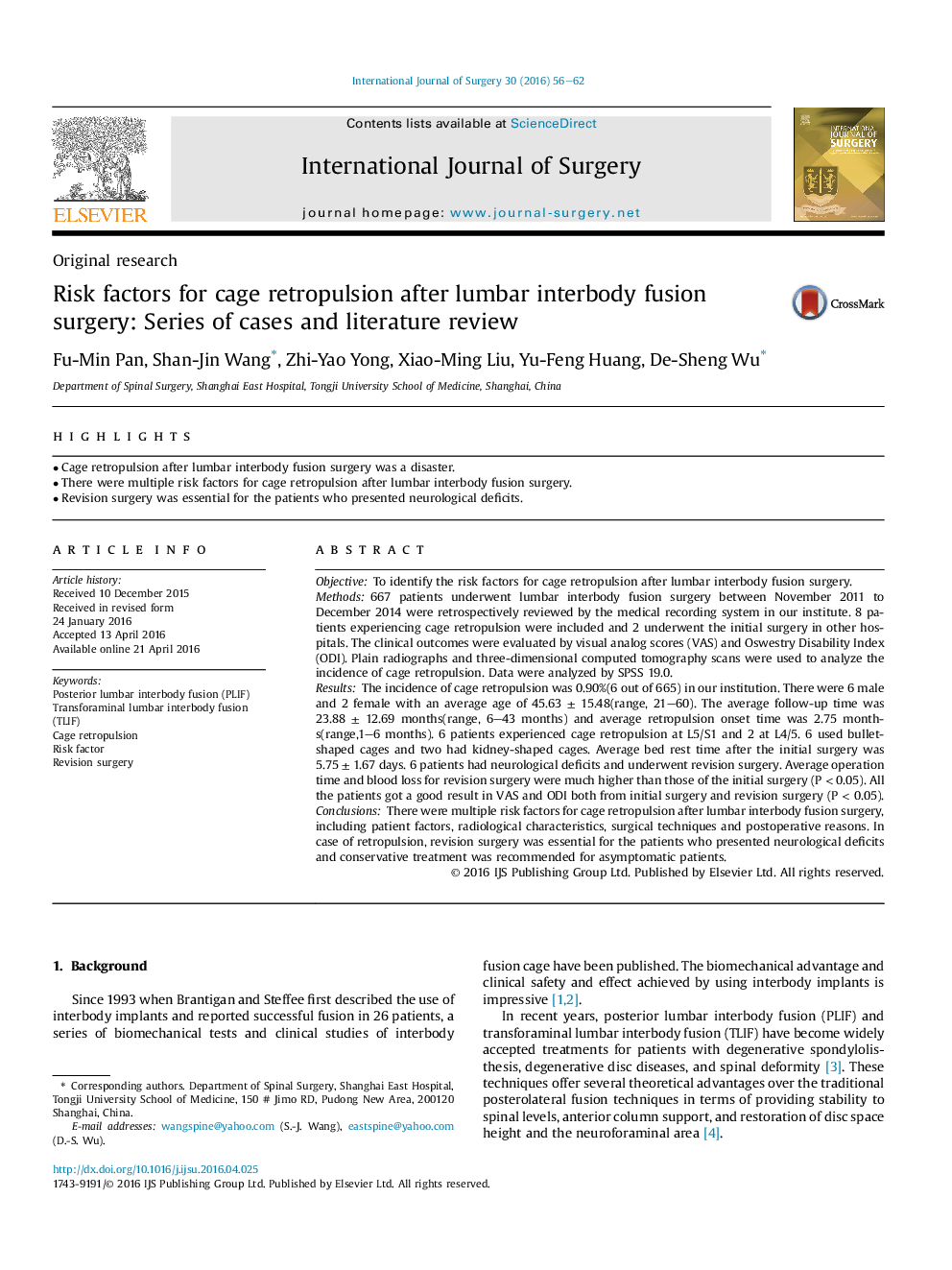| کد مقاله | کد نشریه | سال انتشار | مقاله انگلیسی | نسخه تمام متن |
|---|---|---|---|---|
| 4285337 | 1611957 | 2016 | 7 صفحه PDF | دانلود رایگان |
• Cage retropulsion after lumbar interbody fusion surgery was a disaster.
• There were multiple risk factors for cage retropulsion after lumbar interbody fusion surgery.
• Revision surgery was essential for the patients who presented neurological deficits.
ObjectiveTo identify the risk factors for cage retropulsion after lumbar interbody fusion surgery.Methods667 patients underwent lumbar interbody fusion surgery between November 2011 to December 2014 were retrospectively reviewed by the medical recording system in our institute. 8 patients experiencing cage retropulsion were included and 2 underwent the initial surgery in other hospitals. The clinical outcomes were evaluated by visual analog scores (VAS) and Oswestry Disability Index (ODI). Plain radiographs and three-dimensional computed tomography scans were used to analyze the incidence of cage retropulsion. Data were analyzed by SPSS 19.0.ResultsThe incidence of cage retropulsion was 0.90%(6 out of 665) in our institution. There were 6 male and 2 female with an average age of 45.63 ± 15.48(range, 21–60). The average follow-up time was 23.88 ± 12.69 months(range, 6–43 months) and average retropulsion onset time was 2.75 months(range,1–6 months). 6 patients experienced cage retropulsion at L5/S1 and 2 at L4/5. 6 used bullet-shaped cages and two had kidney-shaped cages. Average bed rest time after the initial surgery was 5.75 ± 1.67 days. 6 patients had neurological deficits and underwent revision surgery. Average operation time and blood loss for revision surgery were much higher than those of the initial surgery (P < 0.05). All the patients got a good result in VAS and ODI both from initial surgery and revision surgery (P < 0.05).ConclusionsThere were multiple risk factors for cage retropulsion after lumbar interbody fusion surgery, including patient factors, radiological characteristics, surgical techniques and postoperative reasons. In case of retropulsion, revision surgery was essential for the patients who presented neurological deficits and conservative treatment was recommended for asymptomatic patients.
Journal: International Journal of Surgery - Volume 30, June 2016, Pages 56–62
